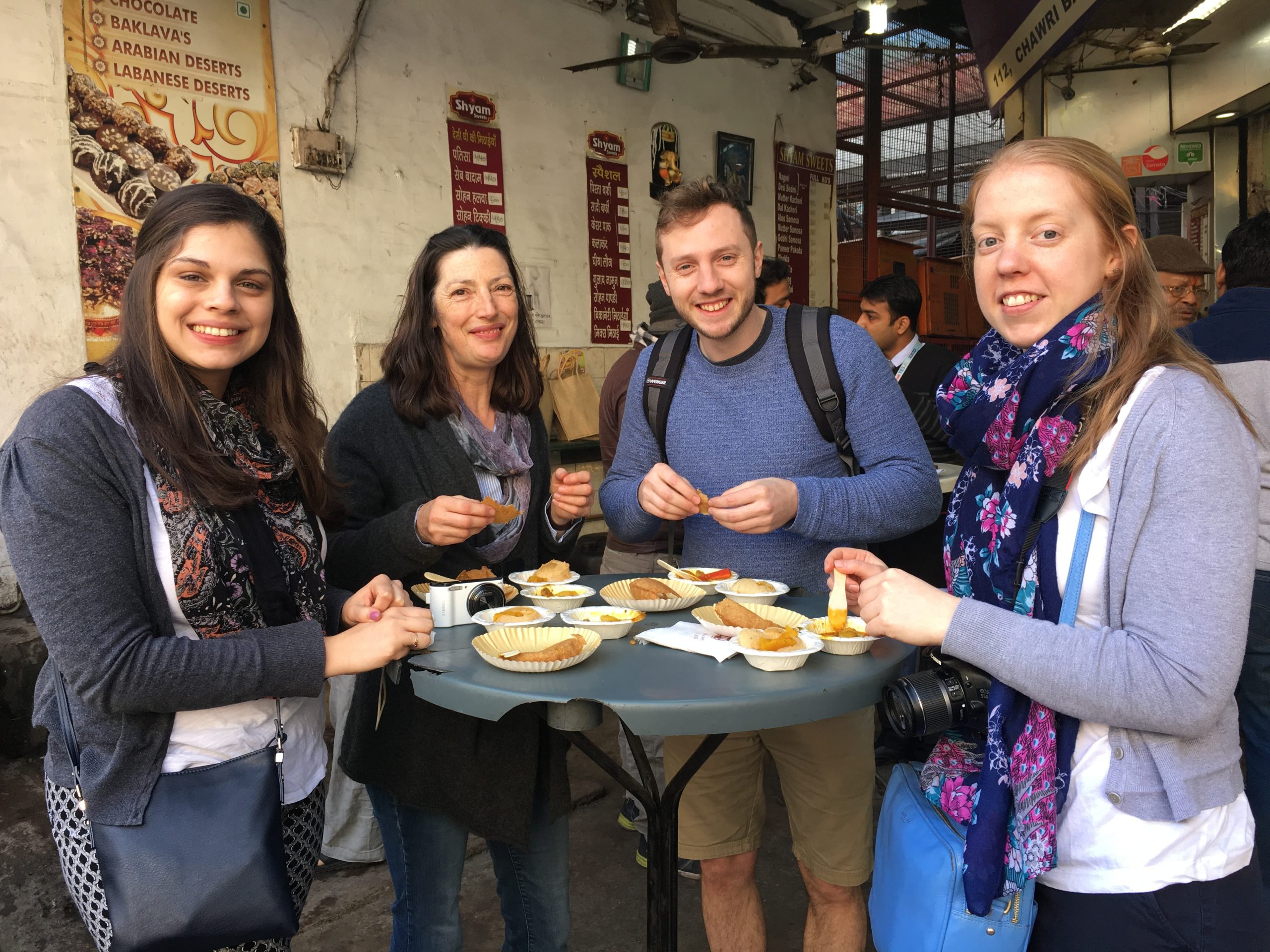Introduction
South Asia, with its rich cultural heritage and diverse culinary traditions, offers some of the most vibrant and flavorful street food scenes in the world. The bustling streets of India, Pakistan, Bangladesh, and Sri Lanka are filled with an array of tantalizing aromas, colors, and tastes that draw locals and tourists alike. This blog takes you on a culinary adventure through the street food culture of these four countries, exploring the iconic dishes, their regional variations, and the cultural significance behind these beloved foods.
India: A Symphony of Flavors
India’s street food scene is as diverse as its cultural landscape, with each region offering its unique specialties.
1. Chaat
Chaat is a quintessential North Indian street food that has gained popularity nationwide. This savory snack typically includes ingredients like crispy fried dough, boiled potatoes, chickpeas, tangy tamarind chutney, and yogurt, topped with fresh coriander and chaat masala. Variations include Pani Puri, Bhel Puri, and Aloo Tikki Chaat, each offering a unique explosion of flavors and textures.
2. Vada Pav
Hailing from Mumbai, Vada Pav is often called the Indian burger. It consists of a spicy potato fritter (vada) sandwiched between a bun (pav) and is typically served with chutneys and fried green chilies. This affordable and filling snack is a staple for Mumbaikars, reflecting the city’s fast-paced lifestyle.
3. Dosas and Idlis
In South India, dosas and idlis reign supreme. Dosas are thin, crispy crepes made from fermented rice and lentil batter, often served with a variety of chutneys and sambar (a lentil-based vegetable stew). Idlis, on the other hand, are soft, steamed rice cakes. Both are not only popular street foods but also common breakfast items.
Pakistan: A Fusion of Tastes
Pakistan’s street food culture is a delightful blend of Mughlai, Punjabi, and regional influences, offering a rich and hearty fare.
1. Biryani
Biryani, a fragrant rice dish cooked with spices, meat (often chicken or mutton), and sometimes potatoes, is a staple in Pakistani street food. Karachi is particularly famous for its spicy and flavorful biryani, often served with raita (yogurt sauce) and salad.
2. Chapli Kebab
Originating from the Khyber Pakhtunkhwa province, Chapli Kebab is a must-try street food. These flat, spiced minced meat patties are typically made from beef or mutton and cooked on large, flat pans. They are usually served with naan, chutney, and fresh salad, offering a perfect blend of spices and textures.
3. Gol Gappa
Known as Pani Puri in India, Gol Gappa is equally beloved in Pakistan. These hollow, crispy puris are filled with spicy tamarind water, chickpeas, and potatoes, providing a burst of flavors with every bite. It’s a favorite among street food enthusiasts for its tangy and spicy kick.
Bangladesh: A Melange of Flavors
Bangladesh’s street food scene is characterized by its bold flavors and unique use of local ingredients.
1. Fuchka
Fuchka, the Bangladeshi version of Pani Puri or Gol Gappa, is a popular street snack. It consists of hollow puris filled with a mixture of tamarind water, chickpeas, and spiced mashed potatoes. The balance of tangy, spicy, and crunchy elements makes it a favorite among locals.
2. Jhalmuri
Jhalmuri is a spicy puffed rice snack that is quick to prepare and incredibly flavorful. It includes puffed rice mixed with mustard oil, chopped onions, green chilies, peanuts, and a variety of spices. Often served in a newspaper cone, it’s a perfect on-the-go snack.
3. Chotpoti
Chotpoti is a savory dish made from boiled peas, potatoes, onions, boiled eggs, and a blend of spices, topped with tamarind sauce and chopped coriander. It’s a staple during festivals and street fairs, loved for its tangy and spicy profile.
Sri Lanka: An Island of Street Food Wonders
Sri Lanka’s street food reflects its rich culinary heritage, influenced by Indian, Dutch, and Portuguese cuisines.
1. Kottu Roti
Kottu Roti is one of Sri Lanka’s most famous street foods. It is made from chopped flatbread (roti), stir-fried with vegetables, eggs, and meat, seasoned with a variety of spices and sauces. The rhythmic sound of chopping the roti on the griddle is synonymous with Sri Lankan street food culture.
2. Hoppers (Appam)
Hoppers are bowl-shaped pancakes made from fermented rice flour and coconut milk batter. They can be plain or with an egg in the middle (egg hoppers) and are typically served with sambols (spicy relishes) and curries. Their crispy edges and soft centers make them a delightful treat.
3. Samosas
A popular snack, samosas in Sri Lanka are usually filled with spiced potatoes, meat, or lentils. They are deep-fried to golden perfection and often enjoyed with a cup of tea. The Sri Lankan version tends to be spicier and has a unique flavor profile compared to its Indian counterpart.
Cultural Significance and Social Fabric
Street food in South Asia is more than just a culinary experience; it is an integral part of the social and cultural fabric. Street vendors are a ubiquitous presence, contributing to the local economy and providing affordable, delicious meals to millions. Street food also brings people together, transcending social and economic boundaries. Whether it’s the shared joy of eating Gol Gappa at a roadside stall or the camaraderie of enjoying a plate of biryani, street food fosters a sense of community and cultural exchange.
Conclusion
The street food culture in South Asia offers a tantalizing glimpse into the region’s rich culinary traditions and vibrant street life. From the bustling lanes of Mumbai to the aromatic markets of Karachi, the spicy streets of Dhaka to the lively vendors of Colombo, each destination provides a unique and unforgettable culinary adventure. As you savor the diverse flavors and textures, you also partake in a timeless tradition that continues to thrive and evolve, connecting people through the universal language of food.
4o
